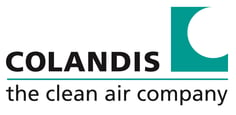Cleaning agents that are capable of removing particles and filmic contamination to clean individual parts, assemblies and machines for cleanroom applications and clean areas cannot be avoided.
Usually the cleaning is done with approved cleaning agents as DI water, isopropanol or even various surfactants, mostly in combination with DI water. Eventually, the question arises which amount and what type of residues may still be left on the technical surfaces after cleaning? DI water and isopropanol evaporate without leaving any residue within a very short time, while surfactants dry up and remain on the surface. These surfactants should also be removed with DI water.
By looking at the life science industries, where microbiological purity is very important, the cleaning procedure consists of cleaning, disinfecting, and cleaning the surfaces from the disinfectant.
High tech industries, such as the semiconductor industry and its suppliers, don`t take the risk that applied cleaners (except isopropanol) may not be completely removed from surfaces. Therefore, it is strictly forbidden to deviate from the approved media. In addition, the evaporation of these non-approved cleaners may affect neighboring processes negatively.
Examples are:
- Acetone, which dissolves plastics and is extremely harmful to health
- Vinegar-based cleaner, in which an acid is released into the environment in an uncontrolled manner
- Window and glass cleaner, which at first sight gives an excellent result but leaves dyes on the surfaces
The list can be continued and the only useful cleaners left will be DI water and isopropanol.
The use of any other cleaner is only allowed, if it can be removed completely. This is possible for single part cleaning in cleaning and rinsing baths but not suitable for assembled assemblies or machines.
Therefore, it is important to understand the entire process chain - from the suppliers to the end product to ensure a perfect cleaning result.
